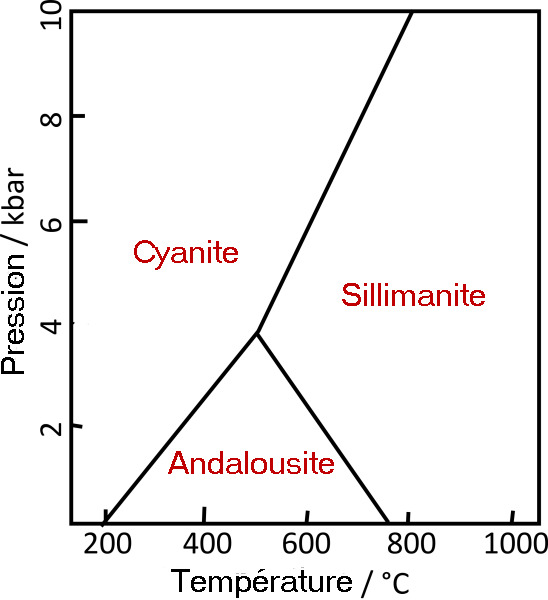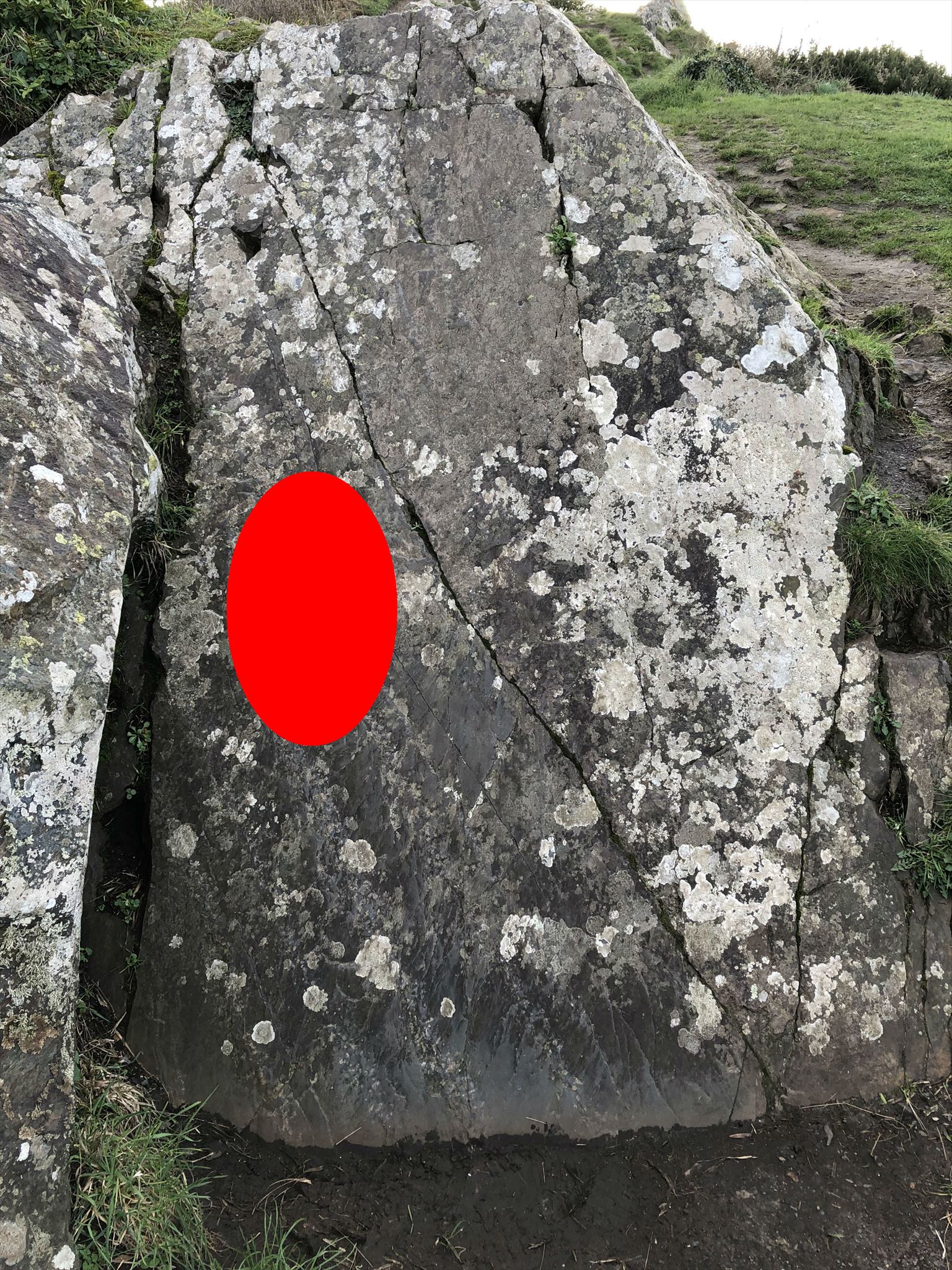Français
Le Grand Rocher de Plestin-les-Grèves (Ar Roc'h Hir Glas) est un grand rocher (ça alors !  ) situé sur un site naturel de 67 hectares. Avec ses 84 mètres de haut, il domine la baie de Saint-Efflam, offrant une vue incroyable à 360°.
) situé sur un site naturel de 67 hectares. Avec ses 84 mètres de haut, il domine la baie de Saint-Efflam, offrant une vue incroyable à 360°.
Mais alors, quel rapport avec l’Andalousie, une région du Sud de l’Espagne à plus de 1200 km de là ? La réponse est géologique bien sûr ! 
La région trégorroise est surtout connue pour son granite rose (300 millions d’années), que vous pourrez mieux connaitre grâce aux nombreuses Earthcaches locales aux alentours de Ploumanac’h. Mais ici, c’est une autre roche qui se trouve sous vos pieds.
En effet, le Grand Rocher est composé de grès, plus précisément du grès armoricain, qui est âgé de 480 millions d’années (période de l’Ordovicien). De plus, des intercalations de schistes sont présentes dans le grès.
Au fil du temps, le Grand Rocher a subi une modification de sa composition par un phénomène appelé métamorphisme de contact. Il s’agit d’une modification géologique qui se produit dans la roche déjà présente (appelée « roche encaissante »), lors d’une remontée de magma vers la surface (appelé « intrusif »). Ce magma encore très chaud entre en contact avec la roche froide autour de lui, provocant un transfert de chaleur (flèches sur le schéma ci-dessous) et une cuisson de la roche au niveau de la bordure du magma. Les minéraux de cette roche sont alors transformés par la chaleur en fonction de leur distance par rapport au magma (la zone concernée est appelée « auréole métamorphique »). On obtient ainsi une roche métamorphique, c’est-à-dire une nouvelle roche apparue par transformation chimique d’une autre. Le nouveau type de roche obtenu dépend de la température et de la pression présentes lors du métamorphisme. Au fil des mouvements de la croute terrestre et de l’érosion, ces nouvelles roches deviennent parfois visibles en surface, au milieu de la roche encaissante.

Schéma du métamorphisme de contact
Ce métamorphisme de contact a donc créé au sein du schiste des cristaux d’une nouvelle roche : l’andalousite.
Pourquoi s'appelle-t-elle ainsi ? C'est le géologue français Jean-Claude Delamétherie qui donnera le nom de cette roche en 1798, en supposant que les échantillons qu’il avait étudiés venaient d’Andalousie. Sauf qu’en réalité ils venaient de la province de Guadalajara, mais le nom est resté.
L’andalousite appartient au groupe des silicates, et a la formule chimique Al2SiO5. Cette formule est appelée « trimorphe », c’est-à-dire qu’elle peut se cristalliser sous trois formes possibles selon la température et la pression, donnant au final trois roches différentes : l’andalousite, la sillimanite ou la cyanite (aussi appelée disthène).
Voici le diagramme de formation de ces trois possibilités, en fonction de la température et de la pression :

Diagramme température-pression de formation du trimorphe Al2SiO5
Lors de la remontée du magma sous le Grand Rocher, la température était élevée mais les conditions n’étaient pas réunies pour avoir une grande augmentation de pression. C’est donc l’andalousite qui s’est formée.
Aux coordonnées de cette Earthcache, au sommet du Grand Rocher, vous pouvez voir un bloc rocheux en pente. Au niveau d’une cassure parmi des schistes incorporés dans le grès, une inclusion d’andalousite est visible en surface. Elle se situe sous la zone rouge ci-dessous et se remarque par sa couleur bien différente du schiste gris.

Afin de valider votre visite, vous devez répondre aux questions suivantes :
1. Le Grand Rocher de Plestin est-il plus ou moins vieux que la Côte de Granite Rose de Ploumanac’h ?
2. Pourquoi n’y a-t-il pas de sillimanite ou de cyanite au Grand Rocher ? Déduisez-en (approximativement) la pression qu’il y avait durant le processus de métamorphisme de contact.
3. Quelle est la couleur des cristaux d’andalousite que vous voyez ?
4. Expliquez comment l’andalousite, qui s'est formée dans les profondeurs, est aujourd’hui visible à plusieurs endroits sur le Grand Rocher ?
Loguez cette cache "Found it" et envoyez-moi vos propositions de réponses soit via mon profil, soit via la messagerie geocaching.com (Message Center), et je vous contacterai en cas de problème.
Les photos de vous ou de votre GPS sur place sont totalement facultatives mais seraient bien appréciées.
English
The Grand Rocher of Plestin-les-Grèves (Ar Roc'h Hir Glas) is a big rock (incredible!  ) located on a natural site of 67 hectares. With its 84 meters high, it dominates the bay of Saint-Efflam, offering an amazing 360° view.
) located on a natural site of 67 hectares. With its 84 meters high, it dominates the bay of Saint-Efflam, offering an amazing 360° view.
But then, what relationship with Andalusia, a region of southern Spain to more than 1200 km away? The answer is geological of course! 
The Tregor region is best known for its pink granite (300 million years), which you can better know thanks to the many local Earthcaches around Ploumanac'h. But here is another rock under your feet.
Indeed, the Grand Rocher is composed of sandstone, more specifically Armorican sandstone, which is 480 million years old (Ordovician period). In addition, intercalations of schist are present in the sandstone.
Over time, the Grand Rocher has undergone a modification of its composition by a phenomenon called contact metamorphism. This is a geological change that occurs in the rock already present (called "surrounding rock"), during a rise of magma to the surface (called "intrusive"). This very hot magma comes into contact with the cold rock around it, causing a heat transfer (arrows on the diagram below) and a cooking of the rock at the edge of the magma. The minerals of this rock are then transformed by heat according to their distance from the magma (the area concerned is called "metamorphic halo"). This gives a metamorphic rock, that is to say a new rock appeared by chemical transformation of another. The new type of rock obtained depends on the temperature and the pressure present during the metamorphism. Throughout the Earth's crust movements and erosion, these new rocks sometimes become visible on the surface, in the middle of the surrounding rock.

Diagram of contact metamorphism
This contact metamorphism has created within the schist some crystals of a new rock: andalusite.
Why is it so called? It is the French geologist Jean-Claude Delamétherie who will give the name of this rock in 1798, supposing that the samples which he had studied came from Andalusia. Except that in reality they came from the province of Guadalajara, but the name remained.
Andalusite belongs to the group of silicates, and has the chemical formula Al2SiO5. This formula is called "trimorph", that is to say that it can crystallize in three possible forms according to the temperature and the pressure, giving finally three different rocks: andalusite, sillimanite or cyanite (also called distene).
Here is the diagram of formation of these three possibilities, according to the temperature and the pressure:

Temperature-pressure diagram of formation of the Al2SiO5 trimorph
During the rise of the magma under the Grand Rocher, the temperature was high but the conditions were not met to have a big increase of pressure. It is therefore andalusite that has formed.
At the coordinates of this Earthcache, at the top of the Grand Rocher, you can see a sloping rocky block. At the level of a fracture among schists incorporated in the sandstone, an inclusion of andalusite is visible on the surface. It is under the red zone below and is noticeable by its color very different from gray schist.

In order to validate your visit, you must answer the following questions:
1. Is the Grand Rocher of Plestin more or less old than the Pink Granite Coast of Ploumanac'h?
2. Why is there no sillimanite or cyanite at the Grand Rocher? Deduce (approximately) the pressure that existed during the contact metamorphism process.
3. What is the color of the andalusite crystals that you see?
4. Explain how andalusite, which formed in the depths, is now visible in many places on the Grand Rocher?
Log in this "Found it" cache and send me your suggestions for answers either via my profile or via messaging geocaching.com (Message Center), and I will contact you in case of a problem.
The photos of you or your GPS on site are totally optional but would be well appreciated.